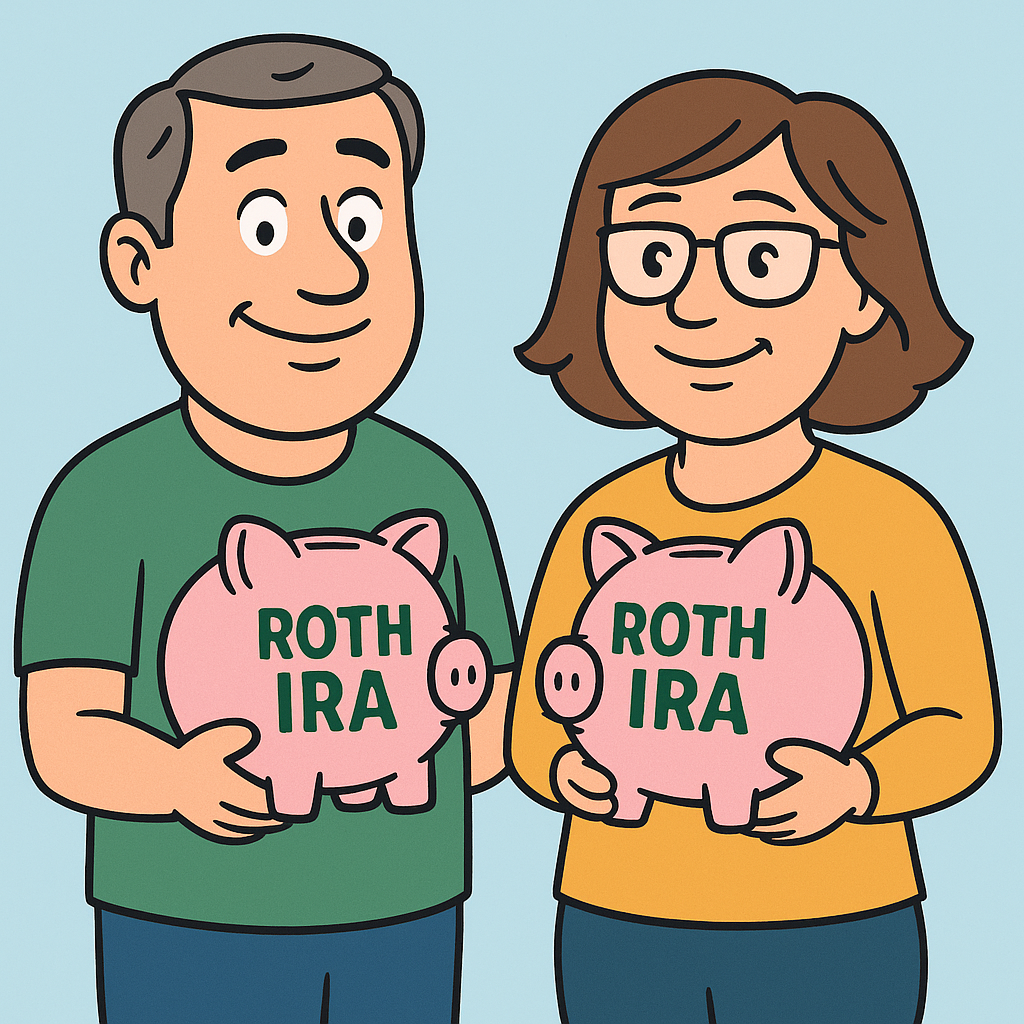The Short Answer
Yes, you and your spouse can both have your own Roth IRAs — and in most cases, you should. The IRS doesn’t care if you’re married when it comes to IRAs. They only care about your income and whether you qualify. Each spouse has their own contribution limit and their own account.
Why Two Roths Are Better Than One
- Double the contribution limit
- In 2025, the Roth IRA contribution limit is $7,000 per person (plus $1,000 if you’re 50 or older).
- Married couple = potentially $14,000 (or $16,000 with catch-ups) into Roths each year.
- Tax-free growth for both of you
- Two accounts means more money growing tax-free for the long haul.
- Flexibility down the road
- Each spouse has control of their own account, which can matter if one of you taps funds early for qualified reasons.
- Spousal IRA option
- Even if one spouse doesn’t work, the working spouse’s income can be used to fund a Roth IRA for the non-working spouse.
Who Qualifies
- You must have earned income to contribute — wages, salary, or self-employment income.
- Your combined income must be under IRS limits for Roth eligibility. In 2025, that’s:
- $230,000–240,000 MAGI phase-out range for married filing jointly.
- If you earn too much? The backdoor Roth is still an option.
The Bottom Line
You and your spouse can (and probably should) each have your own Roth IRA. It doubles your annual contribution room, maximizes your tax-free retirement growth, and gives both of you ownership of your savings.
So yes, the math is simple: two Roths > one.
👉 Related Reading:
- The Midlife Money Catch-Up Plan
- Which Retirement Buckets Should You Fill First?
- If your income is too high for a direct Roth IRA, don’t forget about the backdoor Roth strategy.




Pingback: What’s a Roth Account, and Why Is It So Good? - In The Middle Money